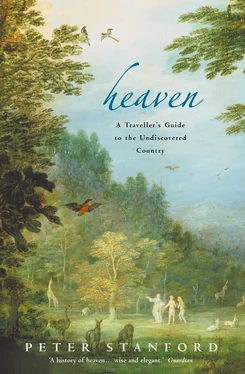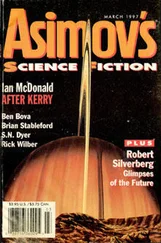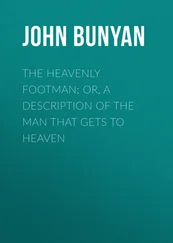1 ...7 8 9 11 12 13 ...18 These first detailed descriptions of the shadowy domain of heaven reflected a substantial body of disillusioned opinion within Judaism in the first century AD which was turning its gaze skywards in despair at what was happening on earth. As such, it had a direct influence on the new Jesus cult that arose at this time and was to become Christianity. The ruling group of Sadducees, a priestly caste based on the Temple, may have had little time for talk of resurrection and so dismissed texts such as Enoch as a distraction from the central need to police ritual purity in the here and now, but their rivals, the Pharisees, and the rebel group of Essenes, best known now through the Dead Sea Scrolls, embraced the apocalyptic thinking behind such books. The Pharisees for their part dreamed of a renewed Judaism that would rise, in the terms of the Book of Daniel, from the dry bones of a conquered Israel. The Essenes were more otherworldly, removing themselves to the desert at Qumran near the Dead Sea, rejecting politics and national concerns, and anticipating the imminent dawn of a new, mystical Jewish state under the leadership of a messiah. Their fervent belief in the End of Days focused their attention ever more closely on what was to come in the new life. Their one aim was to get as close to Yahweh as possible in this life in preparation for the next. They wanted to blur the boundaries. So, as well as their taste for apocryphal literature, they tried to prepare themselves physically by leading an austere existence. They were mainly celibate, their food was frugal and monotonous and they always bathed in cold water. Only in the white garments that they wore at communal gatherings was there a hint that the heaven they were trying to anticipate in their lifestyle would, in its detail, be in any way celebratory.
Traveller’s Tales: 1
Just a year before his death in 1989, at the age of seventy-eight, the celebrated British philosopher A. J. ‘Freddie’ Ayer choked on a piece of smoked salmon while in hospital being treated for pneumonia. He passed out and then, technically, he died. His heart stopped for four minutes before medical staff were able to revive him. A convinced atheist and rationalist, Ayer subsequently spoke to friends of his vivid experience on the other side. His biographer, Ben Rogers, writes:
He had been confronted by a bright red light, painful even when he turned away from it, which he understood was responsible for the government of the universe. ‘Among its ministers were two creatures who had been put in charge of space. These ministers periodically inspected space and had recently carried out such an inspection. They had, however, failed to do their work properly, with the result that space, like a badly fitting jigsaw, was slightly out of joint.’ Ayer could not find any of the ‘ministers’ responsible for space, but he realised that ministers who had been given charge of time were in his neighbourhood and remembering that, according to Einstein, space and time were one, he tried but failed to signal to them by walking up and down and waving the watch and chain he had inherited from his grandfather. Ayer became ‘more and more desperate’ as his efforts elicited no response. At this point his memory of the experience stopped, although when he regained consciousness, he woke talking about a river – presumably the River Styx – which he claimed to have crossed.
(from A. J. Ayer: A Life , Ben Rogers)
In subsequent interviews, Ayer admitted that the experience had made him ‘wobbly’ about the possibility of an afterlife, but soon reverted to type and labelled himself a ‘born-again atheist’. His mind and brain had continued working when his heart had stopped, he explained, and he had had a bad dream. His wife Dee told friends that ‘Freddie had got so much nicer since he died.’
CHAPTER TWO Come Back and Finish What You Started
Judaism moved forward from the Axial Age by developing the idea of a personal God whose ways soared above those of humanity as the heavens tower above the earth. Other contemporaries, though, travelled in the opposite direction. They rejected the single, personal God as too limiting, prone to become a projection of our own fears, needs and desires. They opted instead for an impersonal and opaque deity which was less constrained, less clearly defined, less of an encouragement to complacency within a system of rewards and punishments, and more of a challenge to individuals to journey beyond language, dogma and earth-bound imagery in order to explore the transcendent within.
On the Indian subcontinent, there is some surviving evidence that the reincarnation-based belief system later encapsulated in Hinduism had in fact existed since prehistoric times. On the basis of archaeological findings, for instance, scholars believe that faith in reincarnation existed in the Dravidian people of southern India and northern Sri Lanka. However, in the Vedas – the first sacred texts of Indian civilisation, composed in the second millennium BC – there is the conviction of a life after death but no details about how it is achieved. It is merely a land of shadows akin to the oldest Jewish beliefs.
The Axial Age saw the emergence of both Hinduism and Buddhism. The stance they took on afterlife was radically different from that taken first by Judaism, under the influence of Zoroastrianism, and later by Christianity and Islam. Between 600 and 300 BC, some of the key documents of Hinduism, the Upanishads, were written down by scholars and philosophers of the highly developed civilisation which was based on the River Indus. The Upanishads, while paying homage to the Vedas, substantially developed their ideas on what happened after death by teaching something called samsara – literally a chain of embodiments – whereby individuals died and were reborn according to how they had lived their previous life, i.e. by what ‘karma’ they had achieved.
In places the Upanishads were very specific. If you had stolen grain in one life, you would become a rat in the next. If you killed a priest, you would be reborn as a pig. By twinning reincarnation and karma, the principle that you reap what you sow was set in stone. The Upanishads made it plain that there was not one, single journey upwards. Rather, there would be many twists and turns in an individual’s spiritual journey, because that was how the principle of karma operated. It was a gradual process of education, seeking after moksha – the liberation of the soul from the oppression of the body. Part of the learning curve was to see the self in the wider context. The atman – or ‘individual soul part’ – of the Brahman-Atman – or ‘world soul’ – gave people a seed of the divine which had to be cultivated and, ultimately, liberated.
The process of death and rebirth, therefore, was not envisaged as an endless one. The goal was to continue learning and growing until you had reached such a high level of karma that you could relinquish any sense of yourself and be absorbed into the divine, for at the end of the line stood the gods. It was all about self-learning, self-improvement and self-control. When you reached the highest point, the Upanishads said, you were realising your own destiny. Instead of heaven then, one attained a state of mind or of being, described in one passage in the Upanishads as self-abandonment. The way you lived your life could block your ascent: self-centredness, for instance, was deemed to hinder your absorption into what was called the ‘Great Self. ‘Little Self was egotism; ‘Great Self was understanding your place in the divine plan.
In the Kausitaki Upanishad there is a description, using familiar imagery of place and landscape, to convey the idea of union with the infinite spirit or brahman, but there is little sense of the reader being invited to take what he or she reads literally. It seems instead an effort to put into words what is in fact beyond words. When people depart this world, it states, they go to the moon, which is both the doorway to new life – rebirth on earth – and to the final destination. When they get to the moon, most become rain and are rained down on to the earth, where they are reborn. (Later Hindu belief allowed for a place of temporary respite, called Priti Loka, where one could recharge one’s batteries before returning to earth.) A small number of people, however, are allowed to pass into the inner sanctum where a long, winding path, lined by solicitous angel-like nymphs, leads to the world of brahman:
Читать дальше












